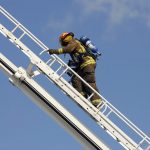Creating Powerful Post-Incident Analyses with ER Software
Written by Tom Louis
Post-Incident Analyses (PIA), After Action Reports (AAR), Incident Debriefings, Tailboard Talks: All of these are examples of what every fire department does (or should be doing) after both major and minor incidents. In fact, if your department adheres to NFPA 1500, you are probably aware of the section that addresses the topic of requiring post-incident analyses for a significant incident or an incident with a LODD or serious injury. Here’s the rundown of NFPA 1500, 8.11:
- 8.11.1 The fire department shall establish requirements and standard operating procedures for a standardized post-incident analysis of significant incidents or those that invoke serious injury or death to a firefighter.
- 8.11.2 The fire department incident safety officer shall be involved in the post-incident analysis as defined in NFPA 1521.
- 8.11.3 The analysis shall conduct a basic review of the conditions present, the actions taken, and the effect of the conditions and actions on the safety and health of members.
- 8.11.4 The analysis shall identify any action necessary to change or update any safety, health, and wellness program elements to improve the welfare of members.
- 8.11.5 The analysis process shall include a standardized action plan for such necessary changes.
- 8.11.5.1 The action plan shall include the change needed and the responsibilities, dates, and details of such actions.
While a PIA/AAR may be considered mandatory for a significant incident, doing a streamlined PIA/AAR for lesser incidents is good practice for any department seeking to improve and strive toward operational excellence.
Here’s some common sense, easy-to-remember discussion points of a PIA/AAR courtesy of MindTools.
- What was supposed to happen? What did happen? Why was there a difference?
- What worked? What didn’t work? Why?
- What would you do differently next time?
It’s important to keep questions open-ended to encourage ample discussion. PIA/AARs are not designed to cast blame. Frankly, in my experience, firefighters (me included!) are usually their own worst critic, so creating an environment where discussion is valued will likely bring out honesty and candor among the participants. Finger-pointing sessions are a surefire way of putting everyone on the defensive and shutting down any productive dialog. At their heart, PIAs/AARs can be summed up in one word that fire service leader and retired Mesa Fire Department (AZ) Chief Dennis Compton talks a lot about: Introspection. In this case it means taking an honest look inward at the performance of yourself, your crew, and your organization.
The other NFPA document that cites PIAs/AARs is NFPA 1250-Recommended Practice in Emergency Service Organization Risk Management. In a nutshell, this document illustrates the value of PIAs/AARs in reducing organization risk. Reducing risk increases the overall safety of your firefighters so they can go on to have a safe, healthy career and a healthy retirement too.
It should never take a firefighter dying, someone getting badly injured, or breaking a really expensive piece of equipment to conduct a comprehensive PIA/AAR. If you’re taking the time to conduct a PIA/AAR, why not take it to the next level by producing a high-quality document that can be shared with a wider audience: the other shifts in your department, other departments in your region, or even the greater fire service nationwide.
Various technologies have already been created to help your PIAs/AARs pack weight. Our Google Maps integration will help you produce visually interesting documents guaranteed to jump-start discussions to improve organizational performance and safety.
Here’s a link to an executive summary of a PIA/AAR I completed some years ago on a residential structure fire. Since that document was published, I’ve learned a few new tricks in ER and Google Earth that can make a good PIA even better.
Did you know that you can export your Occupancy, Hydrants, and Incidents geographical data right into Google Earth as a .kml (Keyhole Markup Language) file? This is an excellent way to capture an overhead view of the incident that will also display the exact location and ID of hydrants and exposures along with the incident number. One caveat: Be sure your data is accurate (especially the lat/long) before exporting it to Google Earth. As with any software platform, it’s always “good stuff in equals good stuff out.”
Once in Google Earth, you can save the image and import to another program so you can add apparatus, hose lays, and other details about the incident. It doesn’t take a special editing program to work with the image. Believe it or not, I used Microsoft PowerPoint to add icons and symbols to this imported image.
Of course, you can always take a screenshot of the image directly from Emergency Reporting as well. You just won’t have all of the tools found in Google Earth.
So, with just a few software tools that are already on your computer, you too can make an impact with powerful Post-Incident Analyses and After Action Reports. I’d love to see examples of PIAs/AARs you’ve created for your department. Please send them my way at [email protected].
Thanks for reading and stay safe.
***
About the Author:
 Tom Louis currently serves as a Business Development Analyst, Subject Matter Expert, and Key Account Manager for Emergency Reporting. He retired as a battalion chief from the Green Valley Fire District in Arizona in 2013 after serving for 22 years. He has used Emergency Reporting since 2004 and has been part of the Emergency Reporting family since 2011, working with customers throughout the United States and in Canada, South Korea, Japan, Germany, Italy, and Kuwait. He holds two associate degrees and graduated summa cum laude from Arizona State University with a bachelor of applied science degree in Fire Service Management. He believes that in order to tell a fire department’s story, high quality, actionable data in an easily understandable manner is essential for our communities and decisionmakers. He is an avid reader of both non-fiction books and technothriller novels, loves classic and modern Mopar muscle cars, and has a soft spot for retired racing greyhounds.
Tom Louis currently serves as a Business Development Analyst, Subject Matter Expert, and Key Account Manager for Emergency Reporting. He retired as a battalion chief from the Green Valley Fire District in Arizona in 2013 after serving for 22 years. He has used Emergency Reporting since 2004 and has been part of the Emergency Reporting family since 2011, working with customers throughout the United States and in Canada, South Korea, Japan, Germany, Italy, and Kuwait. He holds two associate degrees and graduated summa cum laude from Arizona State University with a bachelor of applied science degree in Fire Service Management. He believes that in order to tell a fire department’s story, high quality, actionable data in an easily understandable manner is essential for our communities and decisionmakers. He is an avid reader of both non-fiction books and technothriller novels, loves classic and modern Mopar muscle cars, and has a soft spot for retired racing greyhounds.




